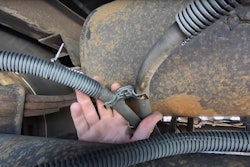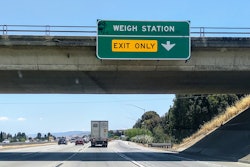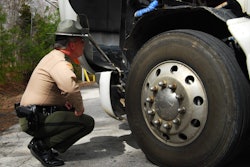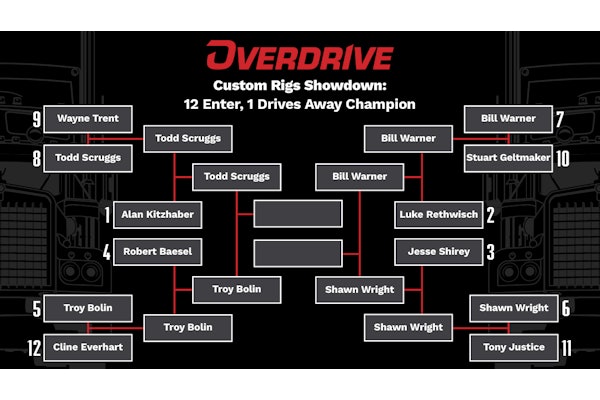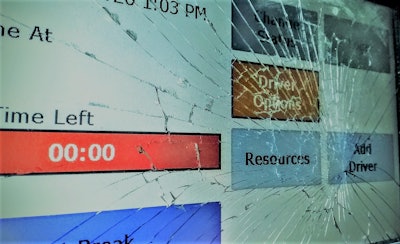
"Man versus machine" dynamics, long noted in the era of the electronic logging device by compliance consultant Jeff Davis in his work supporting carriers during federal and state motor carrier audits, have no doubt come to the roadside. That's what's suggested by Overdrive's analysis of a rise in focus on hours of service violations documented in the 2022 CSA's Data Trail update.
Roadside violations in the hours of service category, in real-numbers terms, fell fast the first three years (2018-2020) after the ELD mandate came into play, but 2021 reversed that trend in a big way, with total violations issued eclipsing the 2019 total and getting close to that seen in 2018. As a percentage of total violations issued at roadside, the trend toward prioritizing hours inspection is up in a more outsize way.
What's driving the trend is a mix of generally depressed vehicle inspection/violation numbers, as documented in the previous part of the long-running CSA's Data Trail series of reports, plus most inspectors' now-entrenched familiarity with assist software FMCSA put in the hands of law enforcement as the ELD mandate came into effect.

See how each state stacks up with this comprehensive report
Understand your inspection risk with these national rankings for inspection intensity, highly variable across the United States, as well as where an inspection is most likely to result in a violation in this report from the editors of Overdrive and CCJ in partnership with sister data company RigDig.
Download the report to access state-by-state insights on:
• Moving violations, such as speeding
• Hours of service
• Brakes, lights and other vehicle violations
• Clean inspections
• Violations per inspection

Comfort level with the data transmission aspect of a roadside check is on the rise for another group, too, said Chris Turner, formerly of the Kansas Highway Patrol and now serving the Commercial Vehicle Safety Alliance as director of enforcement data. "Folks are becoming more and more comfortable with an ELD," Turner said, and that includes "drivers getting more comfortable submitting the information" to the officer at roadside. Those officers, furthermore, are "all understanding [the data] better," too.
CVSA, as the alliance has not been shy about reporting, asked FMCSA to add a violation code that would enable tracking so-called "false log" violations -- 49 Code of Federal Regulations 395.8(e)(1) -- that were a result of a misuse of personal conveyance. PC mode in an ELD enables driving of the truck to appear on the off-duty line on the log.
The violation code was added following Roadcheck last year, during which, Turner pointed out, hours of service violations were the highest out-of-service category of violation, jumping "exponentially from the year before," Turner said.
ELD analysis software in use at the roadside makes it very easy for a knowledgeable inspector to see at a glance all uses of personal conveyance, said compliance consultant Davis. "Inspectors are very, very adept at using" such software, known as eRODS, now. "One of the biggest things we see is that with eRODS, the advantage it has is ... massive and intensive data sorting. The machine is a step ahead of the man right out of the gate."
At the roadside, he added, it's now putting "the prior eight days under a microscope."
With a paper log, PC "wasn't much of an issue," Davis said. But inspectors' software now has the ability to overlay off-duty movement of the truck on the "grid log we're all used to looking at. Movement in off-duty or personal conveyance," and unassigned miles, too, is "highlighted on that replicated log. In addition, they can run an additional report," looking specifically at every instance of personal conveyance use for an individual driver. "They still have to go through the work of determining whether that’s appropriate or not," but location data captured by the electronic systems make that easier, too.
As Turner pointed out, enforcement software really "makes those stand out, when you jump locations," or show "furtherance of the load" in the direction of the destination, "rather than legitimate personal conveyance."
[Related: What's appropriate as 'personal conveyance' in the logbook/ELD?]
The result is a fast-growing well of "false log" violations nationally, particularly acute in states that have long ranked high for hours of service enforcement, with a hours violations a very high percentage of total violations issued.
[Related: A sharp rise in moving violations, as inspection numbers inch back toward pre-COVID levels]
Maryland State Police Captain Josh Barnes, dedicated to the state's truck-enforcement unit, concurs that "once you learn how to navigate eRODS, it’s pretty slick." Intuitively, Barnes said, he would think false-log violations would be fewer after the ELD mandate, but describes the PC off-duty-driving mode in ELDs as a veritable "crutch" that too many lean on in order to avoid showing an obvious 11- or 14-hour violation.
That is a losing strategy for operators and motor carriers both, said Davis, though he understands the psychology behind it, and the frustration with ELDs broadly. He painted this scene: you're going down the road on the way to a pick-up or delivery and the ELD is beeping and screaming at you that you're about to be in violation.
Faced with the next decision that needs to be made, "carriers make the mistake of extending their hours by going to PC" to avoid that violation, he said. "Sometimes, though, you’re better off taking the hours violation rather than the false log" you'll get as a result of such PC use, he said.
He points to the results of two audits conducted just within just the last couple of weeks where the carriers he was advising ultimately came out with an adverse Conditional rating. "In both instances it's false logs that triggered the rating," he said. "In both instances it’s misuse of personal conveyance" that was the issue, too, and the carriers' level of daily drive time violations was exceedingly low.
Among the top four states in the CSA's Data Trail rankings for prioritization of hours of service violations broadly, all but Georgia are encoding higher numbers of false-log violations today than daily-drive-time limits, as shown.
Assess your own risk when it comes to inspections and violations -- for full 48-continental-states rankings in hours of service and other violation categories, download the 2022 CSA''s Data Trail update via this link.

